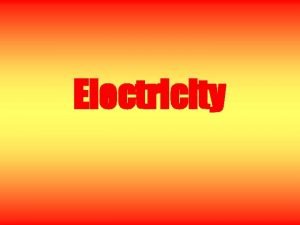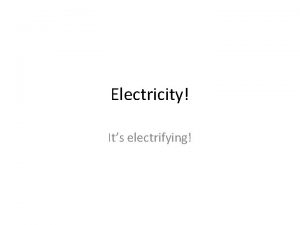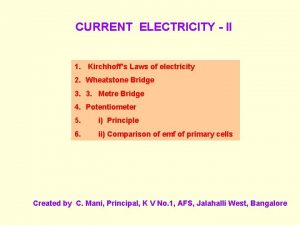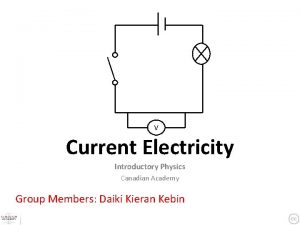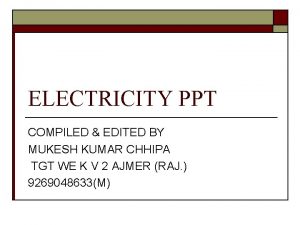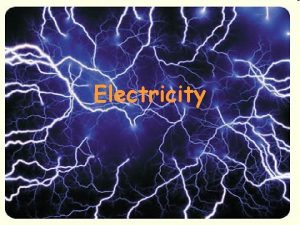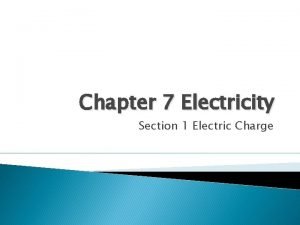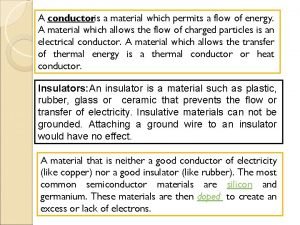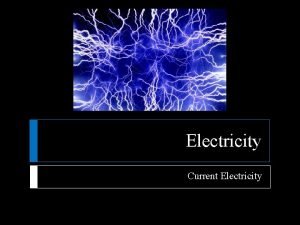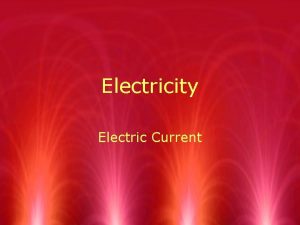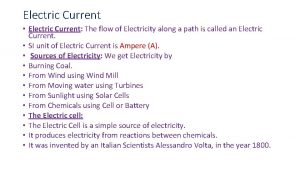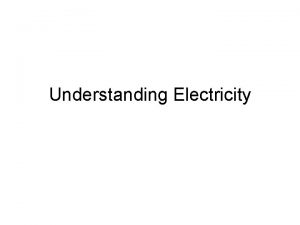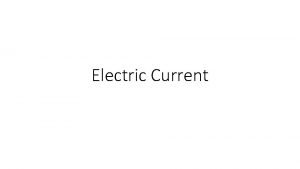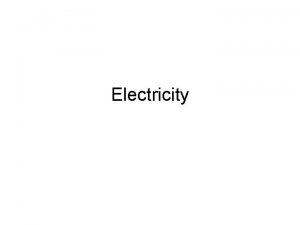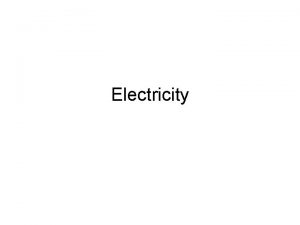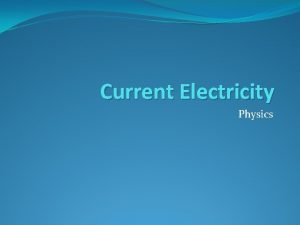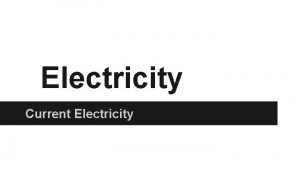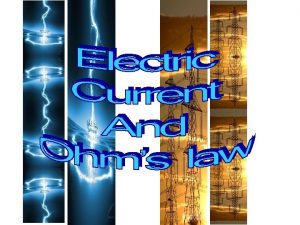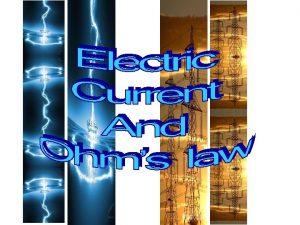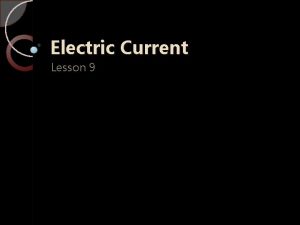Electricity Electric Current Electric Current The flow of














- Slides: 14

Electricity Electric Current

Electric Current • The flow of charges through a wire or conductor is called an electric current

Electric Current • Current is the flow of electrons (e-) • Current (I) is measured in amperes (A)

Electric Current • Charges flow from high voltage to low voltage – A voltage difference is the push that causes charges to move – Voltage difference is measured in volts (V)

Electric Current • For charges to flow, the wire must always be connected in a closed path, or circuit

Sources of Electricity • Dry cell battery - produces a voltage difference between its zinc container and carbon rod, causing current to flow between them • Wet cell battery - contains two connected plates made of different metals in a conducting solution • Wall sockets - a voltage difference across the two holes of an electrical outlet provided by a generator at a power plant

Resistance • The tendency for a material to oppose the flow of electrons, changing electrical energy into thermal energy and light – All materials some resistance have electrical

Resistance • Resistance (R) is measured in ohms (Ω) • Making wires thinner, longer, or hotter increases resistance their

The current in a circuit equals the voltage difference divided by the resistance V I R

Applying Ohm’s Law

1. 3

1. 3 W 3. 9 V 1. 3 W 3. 9

Practice Problem

Practice Problem V I R I=V/R I = 1. 5 V / 2 W I = 0. 75 A
 Static electricity and current electricity
Static electricity and current electricity Current electricity
Current electricity How are static electricity and current electricity alike
How are static electricity and current electricity alike Kinds of electric
Kinds of electric Difference between charge and electric charge
Difference between charge and electric charge Electricity def
Electricity def Bill nye electricity worksheet
Bill nye electricity worksheet Current electricity
Current electricity What is current electricity in physics
What is current electricity in physics Current electricity ppt
Current electricity ppt Klews chart
Klews chart Chapter 6 section 1 electric charge worksheet answers
Chapter 6 section 1 electric charge worksheet answers Electricity section 1 electric charge
Electricity section 1 electric charge Electricity section 1 electric charge
Electricity section 1 electric charge The material that permits the flow of electricity
The material that permits the flow of electricity



